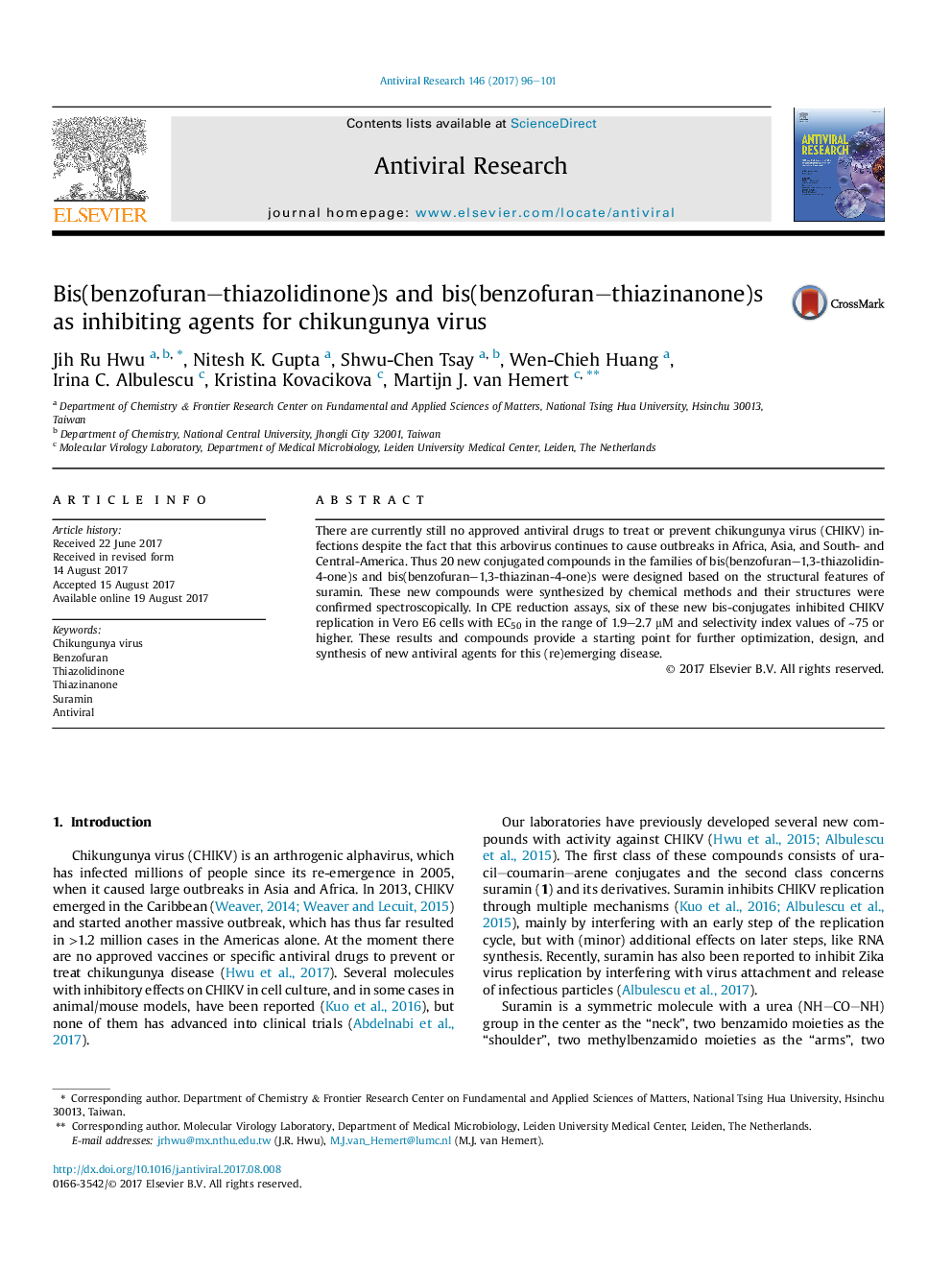| Article ID | Journal | Published Year | Pages | File Type |
|---|---|---|---|---|
| 5551677 | Antiviral Research | 2017 | 6 Pages |
â¢New bis(benzofuran-1,3-thiazolidin-4-one)s and bis(benzofuran-1,3-thiazinan-4-one)s were designed and synthesized.â¢Six compounds in these two categories showed potent inhibitory activity against chikungunya virus.â¢Six-membered thiazinanones were found to be superior to five-membered thiazolidinones against chikungunya virus.â¢Substituents attached to thiazinanone or thiazolidinone rings were critical for exhibition of anti-viral activity.
There are currently still no approved antiviral drugs to treat or prevent chikungunya virus (CHIKV) infections despite the fact that this arbovirus continues to cause outbreaks in Africa, Asia, and South- and Central-America. Thus 20 new conjugated compounds in the families of bis(benzofuran-1,3-thiazolidin-4-one)s and bis(benzofuran-1,3-thiazinan-4-one)s were designed based on the structural features of suramin. These new compounds were synthesized by chemical methods and their structures were confirmed spectroscopically. In CPE reduction assays, six of these new bis-conjugates inhibited CHIKV replication in Vero E6 cells with EC50 in the range of 1.9-2.7 μM and selectivity index values of â¼75 or higher. These results and compounds provide a starting point for further optimization, design, and synthesis of new antiviral agents for this (re)emerging disease.
Graphical abstractDownload high-res image (333KB)Download full-size image
